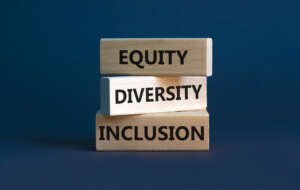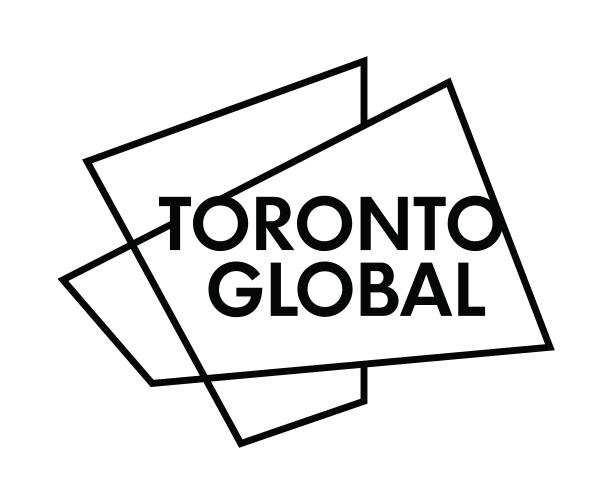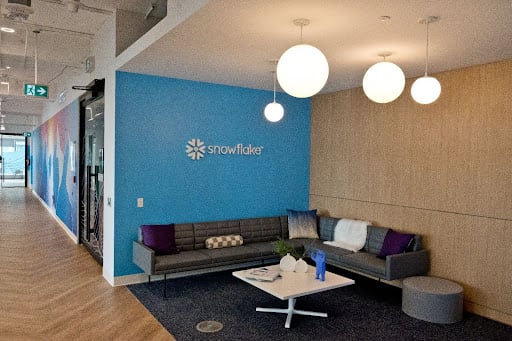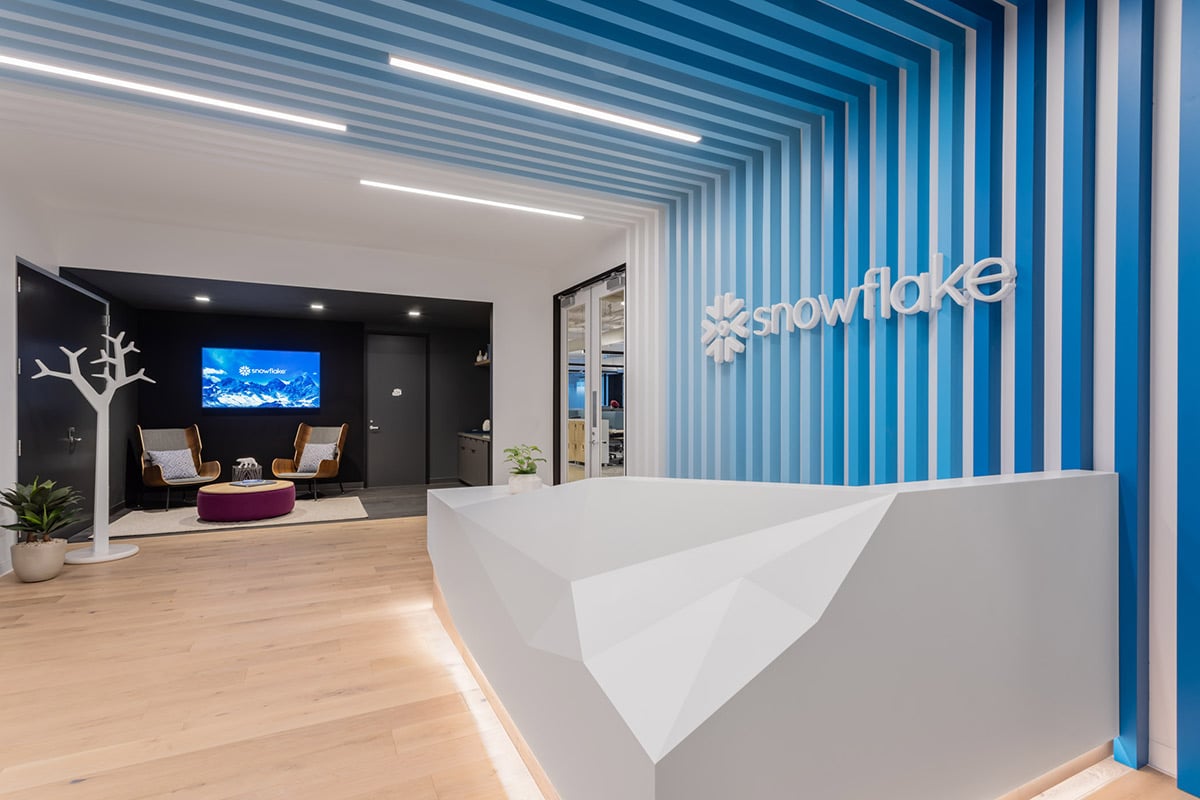Bringing equity, diversity, and inclusion to the forefront
It’s been more than a year since a historic racial justice movement has come to light and compelled us all to take action. This opportunity has given the Toronto Global team space to look closer at our perceptions and fulfil our roles in making a positive change. One of the most prevalent social movements influencing our generation has brought equity, diversity, and inclusion (EDI) practices to the forefront of Canada’s labour market, creating ripple effects in our current workforce, and drastically changing the course of how the workplace is going to be shaped in coming years.
Our team created Toronto Global’s Diversity & Inclusion Task Force with the goal of building a safe and empowering workplace that helps our employees, clients, and communities thrive. This year, as part of an ongoing commitment to fostering an environment focused on equality, inclusion, and respect, we’re kicking off a blog series to celebrate the diversity of our employees and to give us all a space where we can show our authentic selves, both personally and professionally.
What does EDI mean to me?
Here is the definition of EDI that I subscribe to: EDI is a term that describes policies and programs that promote the representation and participation of different groups of individuals, including people of different ages, races and ethnicities, abilities and disabilities, sex and gender identities, cultures and sexual orientations, and religions. It is about developing a compassionate, welcoming, and inclusive culture in our workplaces that leverages the best in our most important asset – our people.
For me, the topic of EDI has always been a part of my thought process growing up and it’s been an important part of my family. My son is an advocate for mental health awareness, and his personal experience facing mental health challenges has opened my eyes, allowing me to examine my own inherent perspective and to figure out how I can be more considerate of others’ backgrounds. He’s the reason why I realized how many people have unique differences, and that making consistent efforts to understand and appreciate individual experiences is important to allow everyone to thrive.
Diversity equity inclusion symbol. Concept words ‘Diversity equity inclusion’ on wooden blocks on beautiful grey background. Diversity, business, inclusion and equity concept.
This is why I want to set the bar for our organization and make sure our team feels supported in every possible way. We’re only as strong as our weakest link – and our organization’s culture is all about prioritizing respect for one another, with the common goal of building a diverse working environment where everyone has a sense of belonging. To me, this has and always will be the right thing to do.
Every organization should reflect the city that you’re in, and we represent the most diverse region in the world. I think it’s important for us to recognize that we all have a role in making sure we have a diverse workforce to reflect where we live and work. Embracing diverse opinions, ideas, cultures, and people – it’s what makes the Toronto Region great and it’s what makes every organization strong.
What does EDI mean to Toronto Global?
Since taking on my role at Toronto Global a year ago, the pandemic has disrupted our day to day lives and forced us to re-think our identity. We have put an internal focus on protecting the needs of our employees first and foremost. Like many of our clients, we are closely evaluating our organization and preparing for the future of our workforce.
Toronto Global is taking a hard look at our people and practices by asking the necessary questions about how we can improve the EDI standards in our team. Questions like, “What can we do to encourage diverse recruitment going forward? What part of our hiring could be affected by unconscious bias, and what do we have to do to prevent this? How do we remove barriers to provide equal opportunity for our team members to fulfil their professional goals?
How do we re-design existing processes to ensure equal treatment, access, and benefits for all racialized groups, inside and outside the organization?” As a result, we are turning our attention to the future and where we can improve our people strategies to prioritize hiring of underrepresented, equity-seeking groups.
How are we driving change in our organization?
When it comes to embracing inclusion, it’s important to recognize inclusion as a collective effort. Our first initiative was to put together a Diversity & Inclusion Task Force, which is made up of internal staff member volunteers. One of the key priorities determined by our task force was to invite EDI leaders and specialists to speak to our leadership and employees to promote awareness and a shared understanding of diversity and inclusion through virtual workshops, trainings, and discussion.
Our first speaker is Dr. Wendy Cukier, Founder of the Ted Rogers School of Management’s Diversity Institute at Ryerson University, who started off the new year with a virtual workshop for our entire team. We are looking to engage organizations, like the Diversity Institute, to help us analyze our existing processes and provide expertise to support us in conducting an internal EDI benchmarking audit.
A component of this benchmarking exercise will also involve internal staff surveys to gain insight from our team on areas of opportunity they see for us to build a more accessible and inclusive organization. Data is an extraordinarily powerful tool to drive change and by engaging staff through self-identification data collection our aim is to also empower them.
We are also exploring online training platforms to support a shared understanding of workplace inclusion, with relevant learning paths for both managers and individual contributor staff. For example, the Toronto Region Immigrant Employment Council (TRIEC) has an excellent online learning hub that provides free access to diversity and inclusion tools, training and resources to employers. This knowledge can be used to enhance the inclusiveness of our approach to internal promotions and performance reviews, to ensure that we are paving the way for success for all employees equitably.
Secondly, we are currently engaging with organizations that are supporting us with identifying and reaching diverse candidates in our recruitment practices. By engaging with groups who specialize in this space – Hire Immigrants, Discoverability Network, and Magnet to name a few – we have started learning how to identify and address unconscious bias in our decision-making and ensure our job postings reach diverse communities.
If we challenge the lens of how we perceive our employees, then we can start understanding how potential applicants will fit into our organization’s culture and value system in a more authentic way.
From the recruitment perspective, we’re doing things like anonymized resume screening, highlighting more impactful equity and diversity statements in our job postings, expanding the applicant pool, re-evaluating role criteria and our approach to skills assessment, and reaching out to industry associations of underrepresented groups to make them aware that we’re hiring. From a leadership perspective, we’ve previously engaged BIPOC Executive Search to source BIPOC candidates for our board and minimize gaps when it comes to diverse representation at the Board level.
How does EDI help our employees and clients?
Our Diversity & Inclusion Task Force is continuously researching and exploring ways that we can progress our organization as an employer of choice with respect to diversity and inclusion to various equity seeking groups and communities. By referring clients to diverse partners and resources when it comes to vendors, suppliers, and consultants, we are ensuring that we continue to promote inclusion and work with groups that reflect the same values as Toronto Global.
Along with bringing onboard our new Senior Manager of People & Culture, Laura Jean McLeod, we have been putting together a toolkit for our employees to support them in developing their cultural competency.
By caring about each of our employees as individuals, we can strengthen our trust for one another, build a community of compassion, and respond to others’ issues respectfully. Internally, we want to give fair and just treatment for everyone by providing employee resources for a diverse range of needs. Our health and benefits program is designed to empower our staff and give them as much flexibility and autonomy as possible.
On top of our policies on discrimination and harassment, accessibility, and equality in the workplace and to increase transparency as part of the #ShowUsYourLeave conversation, I am proud to say that we also offer best-in-class paid leaves to support our team to take care of themselves, their families, and diverse life events.
For permanent full-time staff, this includes paid parental leave top-ups, paid sick, personal and bereavement leave, 100% employer-paid health benefits premiums, and organization-wide mental health days. Further, our generous Learning & Development policy helps to promote inclusive professional development opportunities and removes financial barriers for staff who might otherwise not have the means or resources.
Externally, we have begun supporting our existing and potential client base with useful resources and information that international businesses owned by unrepresented groups who express interest in expanding to the Toronto Region can leverage. As an organization that operates across a multitude of global markets, our staff spend a large part of their time engaging businesses outside of the Toronto Region and we are dedicated to building an awareness and understanding of other socio-cultural environments and the varying business etiquettes of the diverse companies we engage.
We remain committed to helping new companies access the incredible multicultural talent pool in our region and succeed in retaining this talent as their operations grow. The goal is to ensure incoming businesses feel safe and accepted in our diverse landscape, and to share our values by prioritizing EDI practices in these businesses’ recruitment efforts.
Where do we go from here?
Through the difficult and important conversations about addressing racial injustice that what we’ve had with our team, we’ve built and re-built our individual ideas into a collective vision – questioning ourselves and our inherent social preconceptions. We’re not perfect as an organization or as individuals, and I think that’s another important lesson in humility. But we can get better and better. At the end of the day, having a great culture means getting the right people, supporting each other, being open to learning how to do things better, and having a diverse organization that everyone can learn from – ultimately making for a more fun and interesting place to work. I whole-heartedly believe this is the right thing to do.
We are now deciding to speak out. Inspired by our employees, I echo the words of the great Maya Angelou: “Do the best you can until you know better. Then when you know better, do better.”




